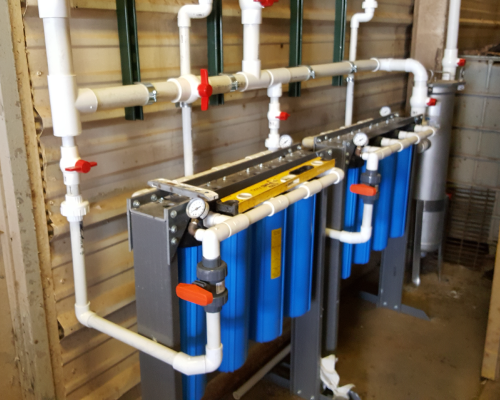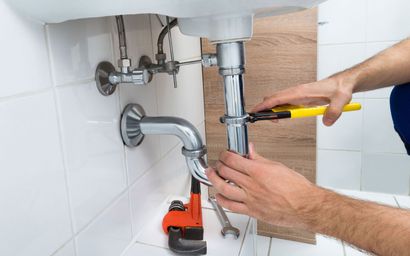Breaking Down The Layout of Your Property's Plumbing System
Breaking Down The Layout of Your Property's Plumbing System
Blog Article
We have stumbled upon this post involving Anatomy of a House: Understanding the Components below on the net and concluded it made perfect sense to talk about it with you on my blog.

Comprehending exactly how your home's pipes system works is vital for each home owner. From delivering clean water for drinking, food preparation, and showering to safely eliminating wastewater, a properly maintained pipes system is crucial for your household's wellness and convenience. In this thorough overview, we'll discover the intricate network that comprises your home's pipes and deal tips on maintenance, upgrades, and dealing with common issues.
Intro
Your home's pipes system is greater than simply a network of pipes; it's a complex system that ensures you have access to clean water and effective wastewater elimination. Recognizing its parts and how they work together can help you avoid expensive repair services and make sure whatever runs smoothly.
Fundamental Components of a Pipes System
Pipelines and Tubing
At the heart of your plumbing system are the pipes and tubing that carry water throughout your home. These can be made of different materials such as copper, PVC, or PEX, each with its advantages in terms of sturdiness and cost-effectiveness.
Fixtures: Sinks, Toilets, Showers, etc.
Fixtures like sinks, bathrooms, showers, and tubs are where water is used in your house. Comprehending exactly how these components link to the pipes system assists in detecting troubles and intending upgrades.
Shutoffs and Shut-off Factors
Valves manage the flow of water in your plumbing system. Shut-off valves are essential during emergency situations or when you require to make repair services, enabling you to isolate parts of the system without interrupting water flow to the whole residence.
Water System
Key Water Line
The primary water line links your home to the community supply of water or a private well. It's where water enters your home and is distributed to numerous components.
Water Meter and Pressure Regulatory Authority
The water meter actions your water use, while a pressure regulator ensures that water streams at a risk-free pressure throughout your home's plumbing system, protecting against damages to pipes and fixtures.
Cold Water vs. Hot Water Lines
Recognizing the difference between cold water lines, which provide water directly from the main, and warm water lines, which lug heated water from the water heater, aids in fixing and planning for upgrades.
Water drainage System
Drain Pipes Pipeline and Traps
Drain pipelines bring wastewater away from sinks, showers, and commodes to the drain or septic tank. Catches avoid sewage system gases from entering your home and likewise catch particles that could create blockages.
Air flow Pipes
Air flow pipelines allow air right into the drain system, preventing suction that can slow down drain and cause catches to empty. Correct ventilation is crucial for preserving the integrity of your pipes system.
Significance of Correct Drain
Ensuring appropriate drainage protects against backups and water damages. On a regular basis cleaning drains and keeping traps can protect against expensive repairs and prolong the life of your pipes system.
Water Heater
Sorts Of Water Heaters
Hot water heater can be tankless or conventional tank-style. Tankless heating units heat water on demand, while containers save warmed water for immediate usage.
How Water Heaters Link to the Pipes System
Comprehending just how water heaters link to both the cold water supply and warm water distribution lines aids in diagnosing problems like not enough hot water or leaks.
Maintenance Tips for Water Heaters
Frequently purging your hot water heater to remove debris, examining the temperature settings, and evaluating for leakages can extend its life expectancy and boost power efficiency.
Typical Pipes Issues
Leaks and Their Causes
Leakages can occur because of maturing pipelines, loose fittings, or high water stress. Resolving leaks quickly protects against water damages and mold and mildew development.
Obstructions and Obstructions
Obstructions in drains pipes and commodes are usually caused by flushing non-flushable products or a build-up of oil and hair. Using drain screens and being mindful of what decreases your drains pipes can protect against obstructions.
Indicators of Plumbing Problems to Look For
Low tide stress, slow-moving drains, foul odors, or unusually high water bills are indications of prospective pipes troubles that need to be resolved promptly.
Plumbing Maintenance Tips
Routine Assessments and Checks
Arrange yearly plumbing inspections to catch issues early. Search for indications of leaks, rust, or mineral accumulation in faucets and showerheads.
DIY Maintenance Tasks
Easy tasks like cleansing tap aerators, looking for commode leakages making use of dye tablets, or insulating exposed pipelines in cool environments can protect against significant pipes problems.
When to Call a Professional Plumbing
Know when a pipes concern calls for expert experience. Attempting complex repair services without appropriate knowledge can lead to even more damages and greater repair work expenses.
Upgrading Your Plumbing System
Reasons for Upgrading
Upgrading to water-efficient components or changing old pipes can improve water quality, decrease water bills, and increase the worth of your home.
Modern Pipes Technologies and Their Benefits
Explore modern technologies like clever leak detectors, water-saving commodes, and energy-efficient hot water heater that can save money and lower ecological effect.
Cost Factors To Consider and ROI
Compute the ahead of time prices versus long-lasting savings when thinking about plumbing upgrades. Many upgrades spend for themselves with minimized utility bills and less repair work.
Environmental Influence and Conservation
Water-Saving Components and Home Appliances
Installing low-flow faucets, showerheads, and toilets can dramatically decrease water use without compromising performance.
Tips for Minimizing Water Use
Basic habits like dealing with leaks without delay, taking much shorter showers, and running full tons of laundry and recipes can conserve water and lower your energy expenses.
Eco-Friendly Pipes Options
Think about sustainable plumbing products like bamboo for flooring, which is durable and environment-friendly, or recycled glass for countertops.
Emergency situation Preparedness
Actions to Take During a Pipes Emergency
Know where your shut-off valves are located and exactly how to switch off the supply of water in case of a ruptured pipe or significant leak.
Value of Having Emergency Contacts Helpful
Keep get in touch with information for regional plumbing professionals or emergency solutions easily offered for quick action throughout a plumbing situation.
DIY Emergency Fixes (When Appropriate).
Short-lived fixes like utilizing air duct tape to patch a leaking pipeline or placing a container under a trickling faucet can decrease damage up until a specialist plumber shows up.
Verdict.
Recognizing the makeup of your home's plumbing system equips you to preserve it properly, saving time and money on repair services. By adhering to regular maintenance routines and staying notified concerning modern-day plumbing technologies, you can ensure your pipes system operates effectively for several years ahead.
Understanding Your Home Plumbing System: A Comprehensive Guide
Plumbing System: The Lifeline of Your Home
At its core, the plumbing system is designed to perform two primary functions: bring fresh water into your home and remove wastewater. The system is a network of pipes, fixtures, and other components that transport water and sewage. Residential plumbing systems include potable water supply lines, drain-waste-vent (DWV) systems, and various plumbing fixtures that make water use in daily tasks possible.
Key Components:
Water Supply: This part of your plumbing system brings municipal water into your home, passing through the main water supply line. It s responsible for supplying all water needs, from drinking to bathing.
Drainage System: It carries waste and water away from your home to the sewer or septic system. This system includes all the piping within your home that leads to external sewage or septic systems.
Vent System: An essential yet often overlooked component, the vent system allows sewer gases to escape and lets air into the drainpipes, ensuring water and waste move correctly through the system.
Fixture: More Than Just Taps and Toilets
Plumbing fixtures are the most interactive parts of the plumbing system, including faucets, showers, toilets, and sinks. Each fixture is connected to the plumbing system and plays a role in either the delivery of freshwater or the disposal of waste and wastewater.
Types of Fixtures:
Faucets and Sinks: Used for washing hands, dishes, and other daily water needs.
Toilets: Dispose of human waste through the sewage system.
Bathtubs and Showers: Provide bathing facilities, requiring both hot and cold water supply.
Water Supply: The Source of Life
The water supply system is a critical component, ensuring that potable water is available throughout your home for various uses, including drinking, cooking, and cleaning. This system consists of pipes that distribute water to different parts of the house, controlled by valves to regulate the water flow.
Types of Plumbing: Materials and Methods
Various types of plumbing systems and materials are used in residential settings, each with its advantages and applications. From copper and PVC pipes for water supply to cast iron and ABS for drainage, the choice of materials can impact the longevity and efficiency of your plumbing system.
https://intownplumbingtx.com/articles/home-plumbing-system-guide/

Understanding Your Home Plumbing System: A Comprehensive Guide
Plumbing System: The Lifeline of Your Home
At its core, the plumbing system is designed to perform two primary functions: bring fresh water into your home and remove wastewater. The system is a network of pipes, fixtures, and other components that transport water and sewage. Residential plumbing systems include potable water supply lines, drain-waste-vent (DWV) systems, and various plumbing fixtures that make water use in daily tasks possible.
Key Components:
Water Supply: This part of your plumbing system brings municipal water into your home, passing through the main water supply line. It s responsible for supplying all water needs, from drinking to bathing.
Drainage System: It carries waste and water away from your home to the sewer or septic system. This system includes all the piping within your home that leads to external sewage or septic systems.
Vent System: An essential yet often overlooked component, the vent system allows sewer gases to escape and lets air into the drainpipes, ensuring water and waste move correctly through the system.
Fixture: More Than Just Taps and Toilets
Plumbing fixtures are the most interactive parts of the plumbing system, including faucets, showers, toilets, and sinks. Each fixture is connected to the plumbing system and plays a role in either the delivery of freshwater or the disposal of waste and wastewater.
Types of Fixtures:
Water Supply: The Source of Life
The water supply system is a critical component, ensuring that potable water is available throughout your home for various uses, including drinking, cooking, and cleaning. This system consists of pipes that distribute water to different parts of the house, controlled by valves to regulate the water flow.
Types of Plumbing: Materials and Methods
Various types of plumbing systems and materials are used in residential settings, each with its advantages and applications. From copper and PVC pipes for water supply to cast iron and ABS for drainage, the choice of materials can impact the longevity and efficiency of your plumbing system.
https://intownplumbingtx.com/articles/home-plumbing-system-guide/
Do you like reading about ? Put feedback below. We'd be pleased to listen to your thoughts about this blog posting. We are looking forward to see you back again in the future. If you appreciated our article if you please consider to share it. Thank you for taking the time to read it.
Request A Quote Report this page